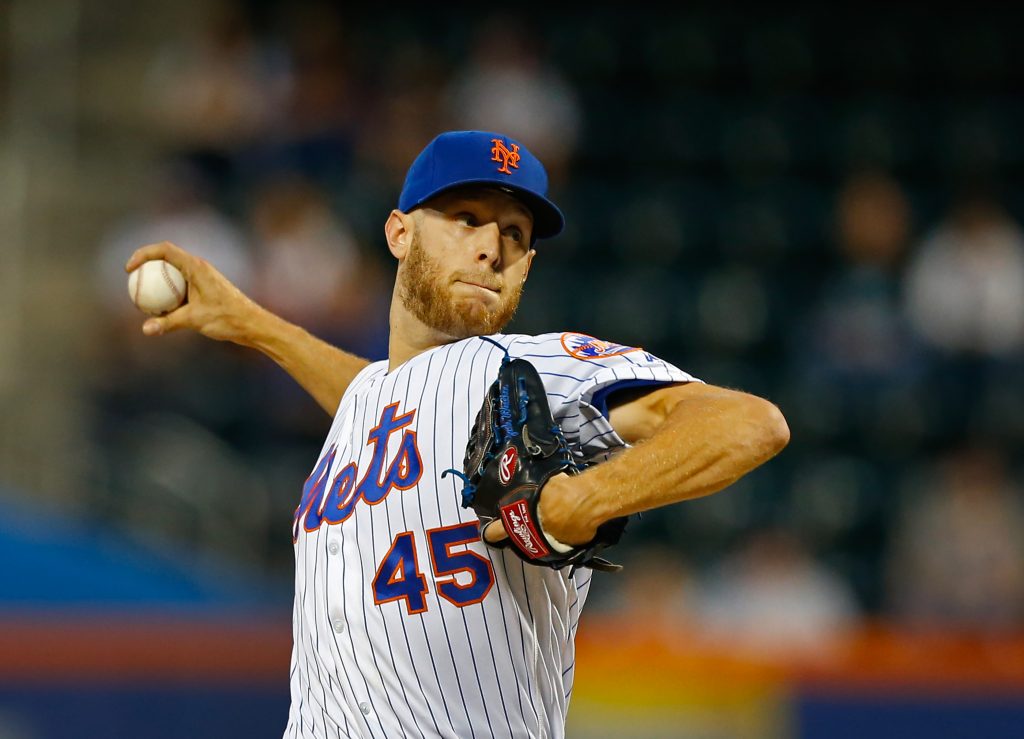
The Mets and Yankees haven’t agreed to a player-for-player trade since the Mike Stanton-for-Felix Heredia swap in December 2004, but that streak was almost broken in blockbuster fashion during Brodie Van Wagenen’s two-year stint as the Mets’ general manager. The two New York teams came very close to a July 2019 swap that would have sent Zack Wheeler to the Bronx, according to SNY’s Andy Martino, except an unknown player also involved in the trade failed a medical exam.
The Yankees were known to be one of the teams interested in Wheeler heading into the deadline, though the Bronx Bombers reportedly had even more interest in another Mets hurler in Noah Syndergaard. Beyond those two members of the Mets rotation, the Yankees cast a wide net looking for rotation help at the deadline but didn’t come away with any significant trades whatsoever, whether it be for pitchers or hitters.
The Mets also held off on dealing Wheeler to anyone, as the right-hander finished off a strong season and then left Queens that winter for a five-year, $118MM free agent contract with the Phillies. Interestingly, the Yankees were also linked to Wheeler’s free agent market, but instead pivoted to make an even bigger splash by signing Gerrit Cole to a nine-year, $324MM pact — still the largest contract ever given to a pitcher in total dollars.
Beyond the sheer rarity of the two Big Apple rivals swinging such a notable trade, the Wheeler deal would have created a big ripple effect across recent baseball history. For starters, adding Wheeler might have been the final piece the Yankees needed for a championship, as the club overcame a ton of injuries to win 103 games before eventually falling to the Astros in the ALCS.
If Wheeler had been a key cog in a 28th Yankees World Series title, perhaps the Bombers would’ve been more inclined to retain their new hero in free agency, rather than sign Cole. Even if keeping Wheeler might’ve cost more than $118MM in this scenario, his deal would’ve been worth much less than Cole’s contract, thus giving the Yankees extra money to spend on other needs that offseason.
It isn’t known what the Yankees would’ve had to have given up to land Wheeler from the Mets, though since he was a free agent that winter, it wouldn’t have been an overwhelming trade package for just two-plus months of the righty’s services. However, it was clearly enticing enough for Van Wagenen to pull the trigger had everything worked out on the medical front, and it was enough to outbid the many other teams known to be circling Wheeler in the lead-up to July 31, 2019. The Mets could have kept those Yankees trade pieces as a way of restocking the farm system after the Marcus Stroman deal with the Blue Jays that same deadline, or perhaps looked to flip the prospects in a future trade for more immediate help.
A Wheeler trade would have impacted his free agency in another fashion, as he would’ve been been ineligible to receive a qualifying offer due to the midseason deal. While it didn’t seem like the QO draft compensation had much impact on Wheeler’s market, the lack of a qualifying offer might have resulted in one or two extra teams getting involved, which could have resulted in a few extra millions in Wheeler’s bank account.
The qualifying offer also must have factored into the Mets’ decision-making about the proposed Wheeler deal. The Yankees must have offered something Van Wagenen judged as being more valuable than the compensatory pick the Mets were set to receive for Wheeler. This ended up being the 69th overall pick in the 2020 draft, which the Mets used on high school outfield prospect Isaiah Greene. With his first pro season now in the books, the 20-year-old Greene hit a very solid .289/.421/.368 over 191 plate appearances…
…for the Guardians’ rookie ball affiliate. This is another interesting branch in the Zack Wheeler/Yankees multiverse, as Greene was part of the four-player package (along with Amed Rosario, Andres Gimenez, and prospect Josh Wolf) sent to the Guardians in exchange for Francisco Lindor and Carlos Carrasco — a blockbuster trade completed exactly one year ago today. While Greene wasn’t the centerpiece of that deal from Cleveland’s perspective, it could be that the two sides might have agreed on another prospect as the fourth player. Or, maybe that one little change makes the whole trade fall apart, and Cleveland could have opted for another team’s offer for Lindor and/or Carrasco.
This news is republished from another source. You can check the original article here


